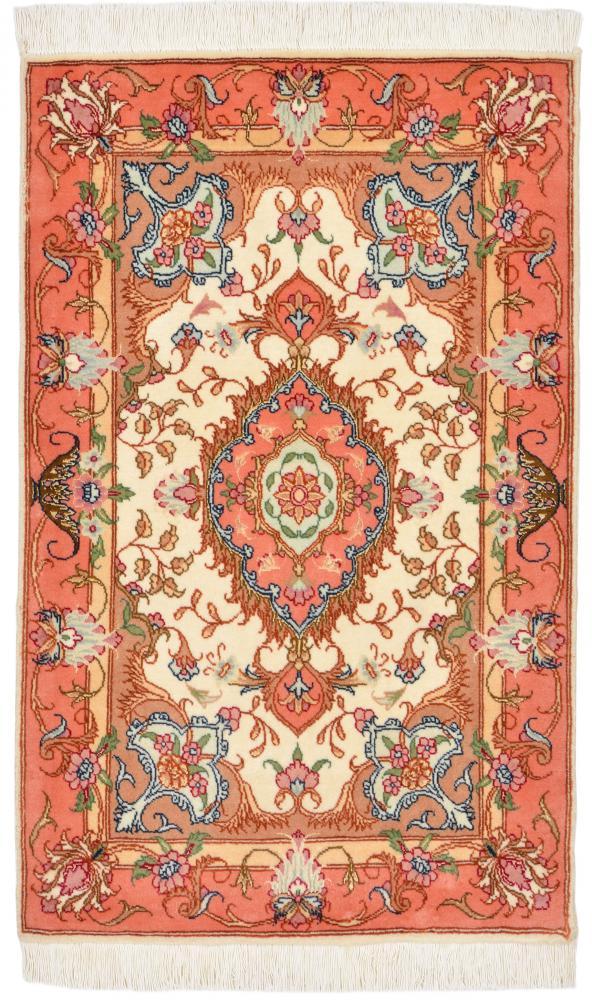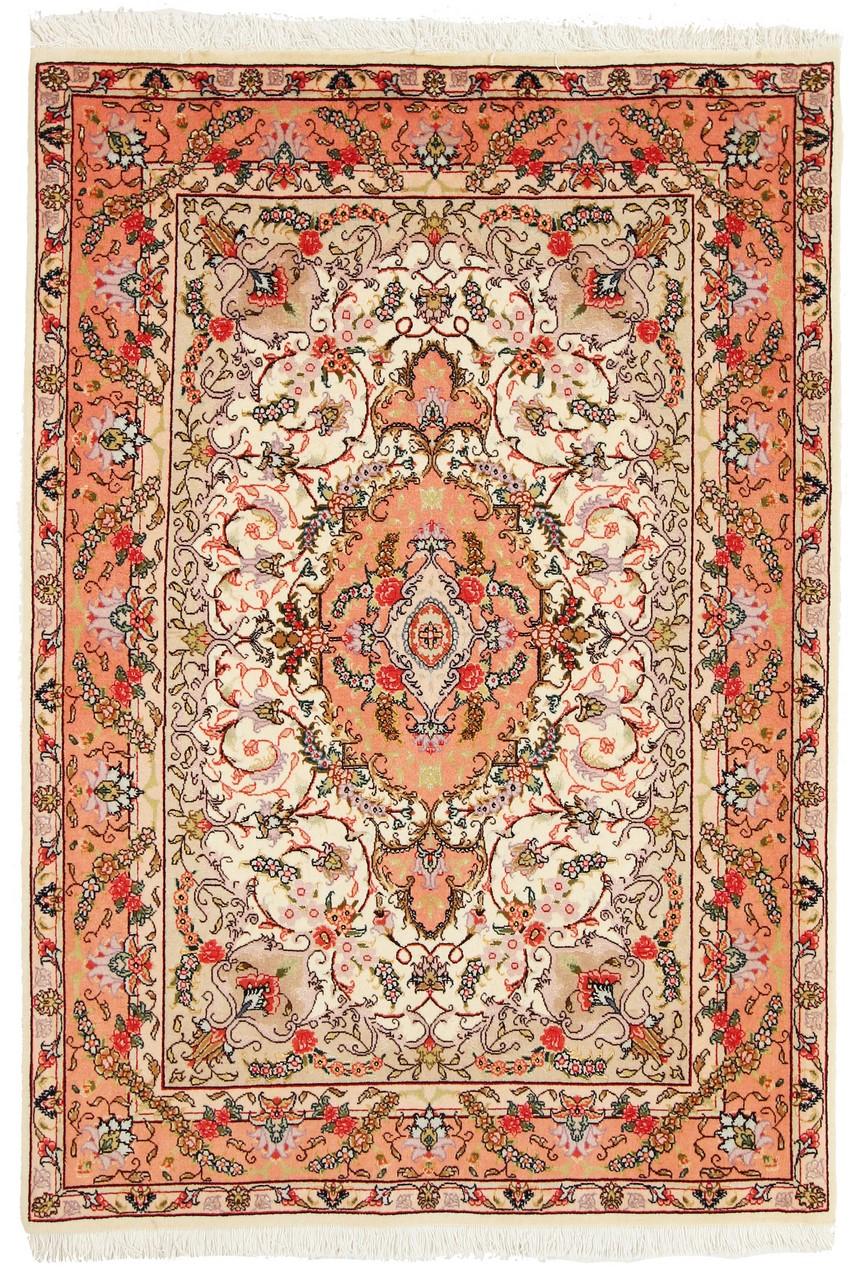Introduction of Tabriz handwoven carpet
The city of Tabriz is one of the most important centers of carpet weaving in Iran. Tabriz carpets, whether the samples are in the world's most famous museums and collections, or those that are offered in large numbers and commercially in markets , are always welcomed and liked by customers. The main feature of Tabriz carpets, which is the reason for their high reputation and value, is their huge variety of colors. In this article, we are going to introduce the hand-woven carpets of Tabriz city, as one of the most important centers of carpet weaving in Iran.
History of carpet weaving in Tabriz
Azerbaijan province has always had a rich history in the field of handwoven carpet production due to its vast resources, agricultural land, suitable climate and mountainous nature. The city of Tabriz has a higher status and reputation among other carpet weaving areas of this region. During the time of Mughal successors, Tabriz was an important center of carpet trade along with Herat. Also, during the Safavid era, with the establishment of large carpet weaving workshops, first-class weavers gathered in Tabriz and weaved very exquisite carpets, many of which are currently housed in large and famous museums in the world, such as the Metropolitan Museum in Russia and the Victoria and Albert Museum in London. . During the Safavid period, the city of Tabriz was considered as a center of art, and as a result, the art of carpet weaving also grew twice with the establishment of master painters and designers such as Behzad and Sultan Mohammad. Tabriz, which has always been the flag bearer of various movements in many fields, played a significant role in the promotion and expansion of Iranian carpets in the world, and the revival and revival of the art of Iranian carpet weaving in the late Qajar period and the early Pahlavi period, and the introduction of Iranian carpets to international markets and the expansion of this Arts and crafts in other parts of Iran owes a lot to the efforts of merchants, traders and carpet weavers of Azerbaijan, and especially the city of Tabriz. During the Qajar period, the export of Iranian carpets as a commercial product began from the city of Tabriz to Turkey and then to Europe, and when the stock of Iranian carpets in Azerbaijan was about to end, with the efforts of Tabriz merchants, carpet weaving workshops in other big cities such as Mashhad, Kerman, Kashan, Arak and Hamedan were established. The export of Iranian carpets from Tabriz was so much a matter of pride and importance for the Iranian government that images of this event were printed on the first beautiful postcards printed at the end of the Qajar period and sent all over the world. Among the biggest carpet exporters in Tabriz, who are considered to be the first carpet exporters in Iran, and some of them also had a hand in carpet production, are Haj Yusuf Qalichi, Haj Abdullah Qalichi, Haj Mirza Jafar Islambolchi, Haj Samad Qara. Qalichi, Mirza Ali Asghar and Mirza Ali Akbar and Ismail Qalichi, Sedqiani, Ipekchi, Haj Mohammad Mamqani, Kasbarian and Urdobadi mentioned.
Tabriz, the world city of carpet weaving
It is necessary to mention here that the city of Tabriz has been chosen by the "World Handicrafts Council" as the "World City of Carpet Weaving", which is an honor for this city and for all of Iran.
Technical and artistic features of Tabriz carpet
Currently, the city of Tabriz is known as the center of production and supply of the so-called urban woven carpets of Azerbaijan province. In the following, we will mention the most important features of the hand-woven carpets of Tabriz city, including design and color, material, fibers used, index and texture type.
Design and color in Tabriz carpet
In terms of design and color, Tabriz carpet is such that you can find traces of every beautiful Iranian carpet design in it. In the way that Tabriz carpet weavers currently use any beautiful design and create a new design by combining that design with different colors. Types of lach and tanraj designs, tree, vase, and checkered designs are among the most famous designs used in Tabriz carpets. Freshness and freshness of color is the feature that attracts buyers to Tabriz carpets more than anything else. But in recent years, the popularity of the farang flower design and the use of unusual and inconsistent colors such as pink, yellow, orange and purple have had a negative effect on the reputation and beauty of Tabriz carpets. In fact, the tendency of Tabriz weavers to use new colors in carpet weaving has led to the introduction of colored materials from western countries into the carpets of this region and the combination of new colors to replace the old ones.
Tabriz carpets in the past seventy years often have tree designs, mehrabi, flower pots, ancient works and Islamic buildings, Islamic design, Afshan design, fish design in Hame or Herati, Kandildar design, animal design, hunting ground design, foliage design, Farang flower, mohramat design, brick layout or frame frame, woven landscape, Quranic frame, and geometric motifs are woven from the smallest to the largest size. Carpets with samouri or tu sebaghi border are a famous pattern of Tabriz. This design is in the form of two slim patterns that together form a frame that is similar to the shape of a samovar. This type of role is also called Herati.

Raw materials used in Tabriz handwoven carpets
Like many carpet weaving centers in Iran, wool, cotton and silk are used in carpet weaving in Tabriz. The threads or threads in the carpets of this city are usually made of cotton fibers, which have very high strength and resistance. Wool thread is used in the weft and pile of Tabriz handwoven carpets. The wool used in carpet weaving in Tabriz has a unique feature, which is the roughness of the wool fibers. This feature makes the carpets of this region have very high strength, but the shine and the so-called velvety state of the Tabriz carpet is less compared to other regions. The silk carpets of Tabriz city are woven in three forms: chele silk (only the threads of the carpet are silk), silk flowers (the flowers or the lines around it are woven with silk), or all silk is woven, and the chele silk carpets of this city have gained great popularity. bring In recent years, some expert weavers of Tabriz city have produced very fine silk flower carpets with 50 and 60 count on a large scale. These exquisite rugs, some of which also have silk tufts, are often woven with lacy and tangerine patterns, and in light beige and pea colors. Magenta, juniper, olive, and syringe colors are used abundantly in coloring the flowers and motifs of these carpets.
Type of knot and texture in Tabriz carpet
Tabriz handwoven carpets are generally woven using Turkish knot. The type of rug weaving in the rural and nomadic carpets of Azerbaijan, especially in the older examples, are woven in the Persian style using a thick weft. However, the rug weaving of Tabriz carpets, which have been woven in recent years, is in the Turkish style (using thick and thin weft) and is much more delicate than the Persian type of weaving. The number of rural and nomadic carpets of this region is usually between 15 and 25, and coarsely woven. Meanwhile, the index of urban carpets in fine texture samples even reaches 110 (110 knots per 7 cm). In general, in the city of Tabriz, cheap carpets are usually woven from Rajshomar 25, regular carpets available in the market from Rajshomar 30, in export carpets from Rajshomar 35, and for exquisite carpets from Rajshomar 50 and even more. Rajshomar 35 is usually ordered by European companies to the weavers of Tabriz, in most cases, they are woven according to European style and design.
All city carpets woven in Tabriz city and its surroundings are woven in two layers (two thin and thick layers between two rows of weave). But in the villages, especially in the older examples, single-weave carpets and woven flats (thick single-weave) are observed. In a general classification, the carpets of Tabriz city and other cities of Azerbaijan can be placed in the Lul Baf category, which have very good strength and durability.
Shiraze type in Tabriz carpet
In the past, all the carpets of Tabriz, and Azerbaijan in general, were Shiraze during weaving, but now all carpets are often Shiraze after the weaving is finished.
Tabriz handmade carpet dimensions
The variety of dimensions in Tabriz handwoven carpets is great. But the feature and characteristic of the carpets of this city is the texture of fine silk carpets in large dimensions, which is rarely seen in other parts of Iran. Many of these examples of exquisite carpets are world famous and are kept in the most famous foreign museums and collections. The most common dimensions of new city carpets woven in Tabriz are 2x3, 2.5x3.5 and 3x4 square meters. Dimensions smaller than this are usually common in old Tabriz carpets. Special dimensions, such as circles and polygons, have also been woven in this area in recent years.
Conclusion
Finally, it should be said that Tabriz hand-woven carpet is a carpet that is world-renowned for its high elegance in texture, durability and strength, variety of colors and original and valuable design. Also, the city of Tabriz is the first place in Iran where carpets were exported abroad (in the Qajar period). Even now, this city is considered one of the most important markets for supplying handwoven carpets in Iran and abroad. Tabriz's delicately woven and silk carpets are now kept in world-renowned museums and collections as valuable goods, and this is a source of pride for Iranians.
You can inquire about Buying Handwoven Carpets , Buying Handwoven Kilim and Mats , and Buying Handwoven Pictorial Rug Tableaus online from the Hoveida Carpet Store and register all your orders and Wherever you are in the world, deliver it to the desired address in less than 4 working days.
If you are interested in reading other articles in the field of Handwoven carpets or Handwoven Pictorial Rug Tableaus , please refer to Hoveida Carpet Commercial
Leave a comment
Your email address will not be published. Required fields are marked *












